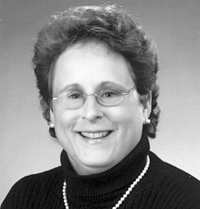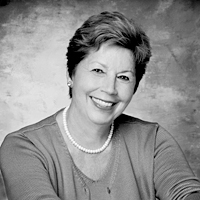| |
 |
| |
Mary
Sheehan '01 |
| |
|
| |
 |
| |
Dorothy
Pitner Healy '86 |
| |
|
| |
|
| |
|
MBA
the prescription for healthcare management
by
Chris Van Nostrand
As colleagues at
Midwest Palliative and Hospice Care Center, nurses-turned-nonprofit-leaders
Dorothy Pitner Healy '86 and Mary Sheehan '01
illustrate how the MBA has become a valued degree in the medical
field over the last 20 years. Healy, the organization's president
and CEO, graduated from the Kellogg School's Executive Master's
Program (EMP-13) to find that her expertise and education
were difficult to sell to potential employers. "At that time,
they really didn't know what to do with a nurse who had an
MBA," says Healy. Sheehan, meanwhile, serves as proof of a
real industry shift: She enrolled in EMP-43 as part of a natural
career transition from long-time hospice nurse to COO.
Healy has helped
adapt business models in the healthcare industry. Under her
leadership, Midwest Palliative has grown from a small, regional
organization once simply known as Hospice of the North Shore
to an expansive health-service provider. When she agreed to
run the center in 1990 she inherited a budget of $500,000.
The 2004-2005 budget was $26 million.
Growth is also
evident in patient care. When Healy walked into her first
day on the job 15 years ago, she discovered seven full-time
employees and five hospice patients (though the organization
leveraged the talents of many volunteers at that time). Today,
350 staff members care for 1,100 patients in the firm's hospice
and the palliative care sectors.
The cornerstone
of this expanded service is a $15 million Glenview facility
that opened in August, which Sheehan describes as a way of
increasing the organization's visibility. "We're hoping that
this building is ... a bridge to the community," she says.
"We want the public to know that they can go to us for resources
and help." The community clearly responded to that call, as
almost the entire cost of the center was met through contributions
from local individuals and businesses. Healy
and Sheehan move fluidly between speaking about patient care
and operational issues, key evidence that their former careers
intersect naturally with a Kellogg School education and that
the healthcare industry finds great value in the MBA degree.
Sheehan points to Healy as a mentor through the EMP experience
and job change. Healy's journey began without any model to
follow, and yet her own career arc now serves as a guide:
"If I had planned it all out, it couldn't haven gone any more
perfectly for me." |





